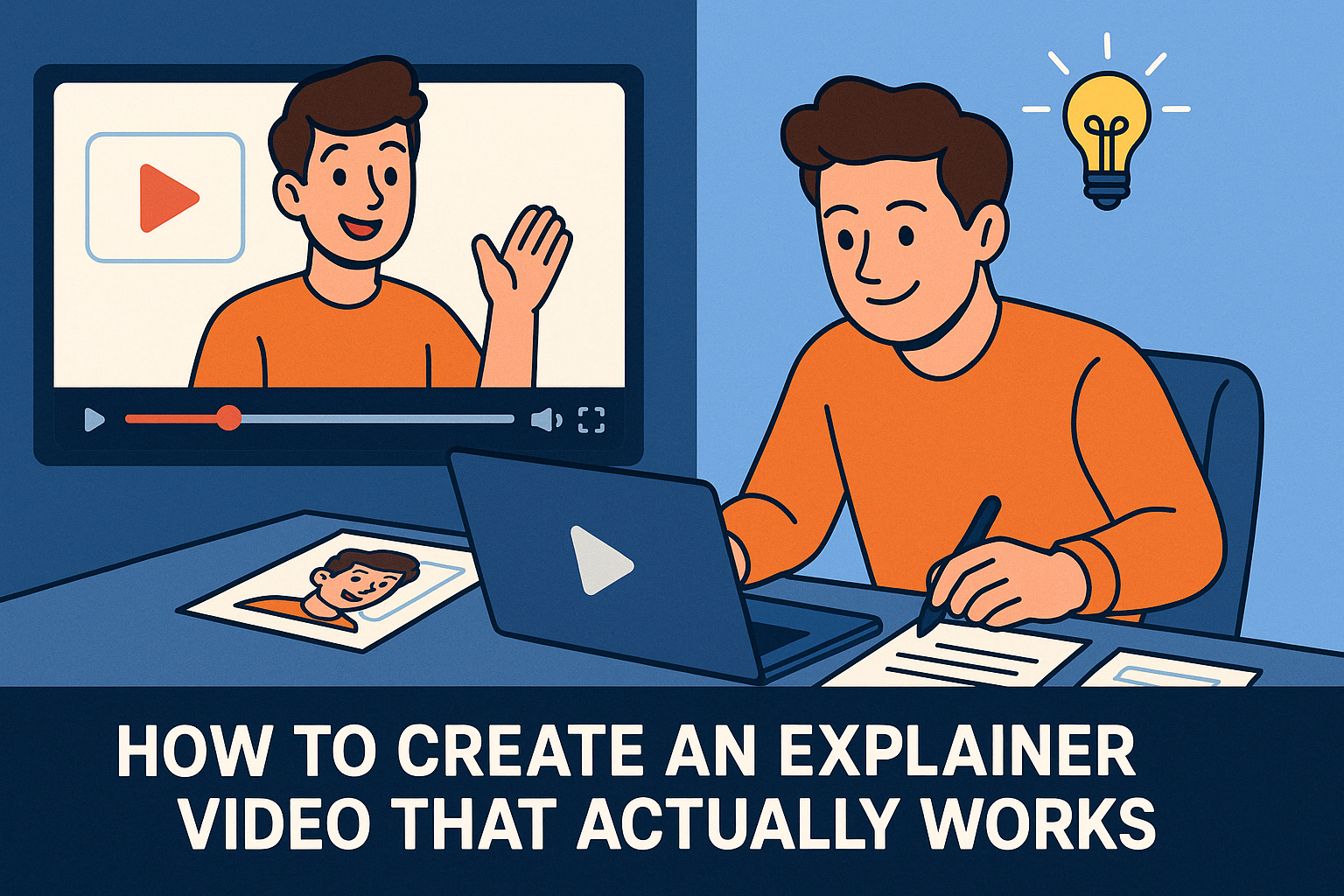How to Create an Explainer Video That Actually Works
Creating an explainer video sounds easy, right? Just throw together some animation, add a voiceover, and boom—you’ve got a video. But the difference between a video that exists and a video that works is huge. If you want your explainer video to actually convert viewers into customers, clients, or supporters, you need a clear strategy, thoughtful design, and a process that puts clarity first.
In this guide, we’ll walk you through exactly how to create an explainer video that does what it's supposed to do: explain your message in a way that's clear, memorable, and effective.
What Is an Explainer Video?
An explainer video is a short, animated video that helps simplify a product, service, idea, or process. These videos are usually 60 to 90 seconds long and are designed to answer key questions, grab attention quickly, and motivate your audience to take action.
They can be used on your website homepage, landing pages, social media, in pitch decks, onboarding flows, and even email campaigns.
Why Explainer Videos Work
People remember visuals better than words alone. A good explainer video combines visual storytelling, voiceover, and motion to break down complex information in a way that feels effortless to the viewer. When done right, they can:
Increase conversions on landing pages
Reduce support tickets by explaining processes
Improve user onboarding
Help close deals by clarifying value
Step-by-Step: How to Create an Explainer Video That Converts
1. Start With Strategy
Before you even think about the visuals, get clear on three things:
Who is this video for? (Target audience)
What problem are you solving?
What action do you want them to take after watching?
These answers will shape everything else—from your tone to your script to your style.
2. Write a Script That Puts the Viewer First
A successful explainer video script isn’t about you. It’s about the viewer. Focus on what they care about. Here’s a basic structure:
Hook: Address the problem they have.
Solution: Introduce your product or service.
How it works: Break it down simply.
Proof or benefits: Share results, features, or testimonials.
Call to action: Tell them exactly what to do next.
Aim for 120 to 150 words for every minute of video.
3. Choose the Right Animation Style
Different styles send different signals. Here are a few to consider:
Whiteboard: Great for education or step-by-step tutorials
Motion graphics: Clean, modern, ideal for SaaS or tech
Character animation: Personable, fun, great for storytelling
Minimal icon-based: Simple and fast-paced, perfect for short explainer clips
Pick a style that matches your audience and brand personality.
4. Record a Professional Voiceover
Don’t underestimate the impact of a good voice. It sets the tone and holds the viewer’s attention. If possible, use a professional voice actor or a high-quality AI voice tool. Make sure the pacing matches the animation and script length.
5. Storyboard Before You Animate
A storyboard is a visual plan for your video. It shows each scene alongside the script, helping you and your team spot issues before animation starts. It’s easier to revise drawings than redo animation.
6. Animate and Add Music
This is where everything comes to life. Motion should follow the pacing of the voiceover. Add background music that fits the tone but doesn’t distract. Include simple sound effects to emphasize actions and transitions.
7. Review, Revise, and Optimize
Watch your video from the viewer’s perspective. Does it answer the right questions? Is it too long? Do you feel confident clicking the call to action?
Ask a few people to watch it and give honest feedback. Be open to tightening the script, trimming scenes, or clarifying visuals.
Common Mistakes to Avoid
Trying to say too much in one video
Using jargon or buzzwords that confuse viewers
Making it too long (aim for 60–90 seconds)
Overloading visuals or using animations just for the sake of movement
Skipping the script or storyboarding phase
Final Thoughts
A great explainer video isn’t just a cool animation. It’s a tool. One that helps people understand what you do and why it matters. When done right, it can drive real results—whether that’s more sign-ups, more clarity, or more confidence in your brand.
Looking for a partner to make your message move? We’d love to help.

